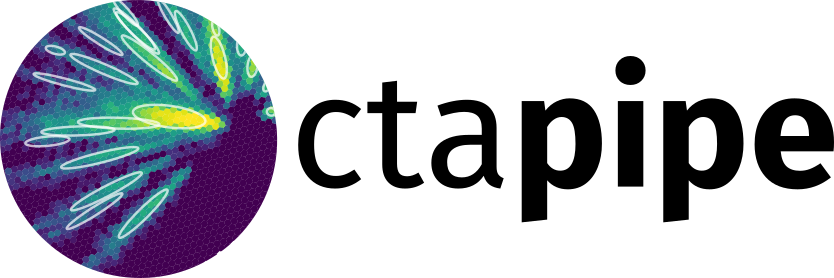Source code for ctapipe.coordinates.telescope_frame
"""
The code in this module is basically a copy of
https://docs.astropy.org/en/stable/_modules/astropy/coordinates/builtin_frames/skyoffset.html
We are just not creating a metaclass and a factory but directly building the
corresponding class.
"""
import astropy.units as u
from astropy.coordinates import (
AltAz,
Angle,
BaseCoordinateFrame,
CoordinateAttribute,
DynamicMatrixTransform,
EarthLocationAttribute,
FunctionTransform,
RepresentationMapping,
TimeAttribute,
UnitSphericalRepresentation,
frame_transform_graph,
)
from astropy.coordinates.matrix_utilities import matrix_transpose, rotation_matrix
__all__ = ["TelescopeFrame"]
_wrap_angle = Angle(180, unit=u.deg)
[docs]
class TelescopeFrame(BaseCoordinateFrame):
"""
Telescope coordinate frame.
A Frame using a UnitSphericalRepresentation.
This is basically the same as a HorizonCoordinate, but the
origin is at the telescope's pointing direction.
This is used to specify coordinates in the field of view of a
telescope that is independent of the optical properties of the telescope.
``fov_lon`` is aligned with azimuth and ``fov_lat`` is aligned with altitude
of the horizontal coordinate frame as implemented in ``astropy.coordinates.AltAz``.
This is what astropy calls a SkyOffsetCoordinate.
Attributes
----------
telescope_pointing: SkyCoord[AltAz]
Coordinate of the telescope pointing in AltAz
obstime: Time
Observation time
location: EarthLocation
Location of the telescope
"""
frame_specific_representation_info = {
UnitSphericalRepresentation: [
RepresentationMapping("lon", "fov_lon"),
RepresentationMapping("lat", "fov_lat"),
]
}
default_representation = UnitSphericalRepresentation
telescope_pointing = CoordinateAttribute(default=None, frame=AltAz)
obstime = TimeAttribute(default=None)
location = EarthLocationAttribute(default=None)
def __init__(self, *args, **kwargs):
super().__init__(*args, **kwargs)
# make sure telescope coordinate is in range [-180°, 180°]
if isinstance(self._data, UnitSphericalRepresentation):
self._data.lon.wrap_angle = _wrap_angle
@frame_transform_graph.transform(FunctionTransform, TelescopeFrame, TelescopeFrame)
def telescope_to_telescope(from_telescope_coord, to_telescope_frame):
"""Transform between two skyoffset frames."""
intermediate_from = from_telescope_coord.transform_to(
from_telescope_coord.telescope_pointing
)
intermediate_to = intermediate_from.transform_to(
to_telescope_frame.telescope_pointing
)
return intermediate_to.transform_to(to_telescope_frame)
@frame_transform_graph.transform(DynamicMatrixTransform, AltAz, TelescopeFrame)
def altaz_to_telescope(altaz_coord, telescope_frame):
"""Convert a reference coordinate to an sky offset frame."""
# Define rotation matrices along the position angle vector, and
# relative to the telescope_pointing.
telescope_pointing = telescope_frame.telescope_pointing.represent_as(
UnitSphericalRepresentation
)
mat1 = rotation_matrix(-telescope_pointing.lat, "y")
mat2 = rotation_matrix(telescope_pointing.lon, "z")
return mat1 @ mat2
@frame_transform_graph.transform(DynamicMatrixTransform, TelescopeFrame, AltAz)
def telescope_to_altaz(telescope_coord, altaz_frame):
"""Convert an sky offset frame coordinate to the reference frame"""
# use the forward transform, but just invert it
mat = altaz_to_telescope(altaz_frame, telescope_coord)
# transpose is the inverse because mat is a rotation matrix
return matrix_transpose(mat)

